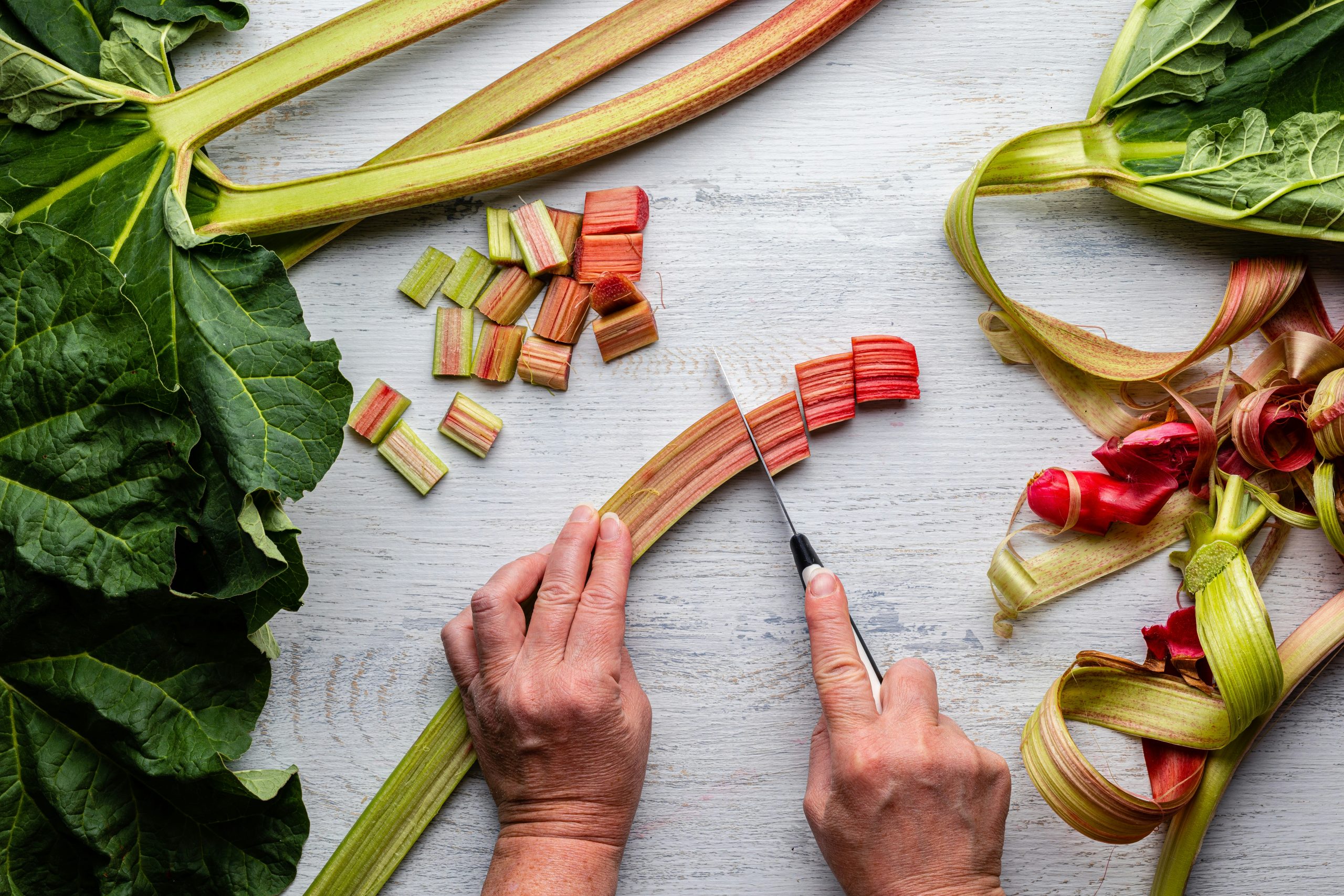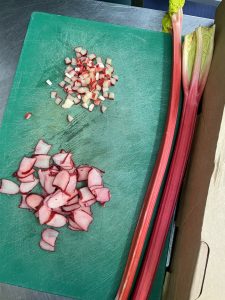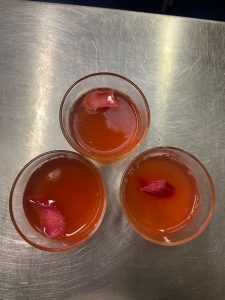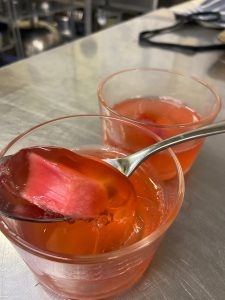Making the Most of Rhubarb Season
It’s no secret that we’re rhubarb fanatics here in the EFS kitchen – so much so that March and April are some of our favourite times of the food year! Rhubarb goes hand in hand with the spring equinox and the turn of the seasons into longer, brighter days. But – even more importantly – Rhubarb season offers a delicious, local, versatile ingredient for us to turn into seasonal, sustainable dishes. Since March, we’ve been getting beautiful forced Rhubarb from our friend at Phantassie Organic Farm in East Lothian. As well as admiring the gorgeous deep pink hues of the forced stems, the EFS chefs have been coming up with all sorts of inventive ways of using rhubarb in sweet and savoury recipes. Here are a few of our favourites.
Quick pickled rhubarb
Rhubarb is technically a vegetable and does as well in savoury recipes as it does sweet! EFS community chef Fergus had the bright idea of pickling rhubarb to garnish a cured trout and horseradish canapé. If you’d like to use your picked rhubarb as a garnish, we’d recommend you brunoise the stems by cutting them into very small cubes, or slice them wafer-thin. Some people like to eat pickled rhubarb stalks like gherkins, so you can also leave them in much larger chunks and experiment. This recipe makes around 500ml of pickling liquor.

Pickled rhubarb cured trout and horseradish cream on crostini
Ingredients
- 200ml vinegar
- 200ml sugar
- 200ml water
- 1tbsp salt
- Aromatics like star anise, fennel seeds (optional)
Method
- Add the chopped rhubarb to a sterilised container
- Put all of the ingredients into a pan, and gently heat until the sugar dissolves
- Bring the liquid to the boil, and pour over the prepared rhubarb
- Seal the container and refrigerate for 24 hours. Once ready, the
- pickled rhubarb will last in the fridge for a few weeks.
Poached Rhubarb
This is a classic way to enjoy rhubarb, and you can eat it with a plethora of options – yoghurt, porridge, custard – go wild. We recently served poached rhubarb swirled through sour cream as an accompaniment to an apple crumble at a community meal and it was delicious. We like this recipe from Riverford, but we sometimes swap the orange for lemon and add a little extra sugar.
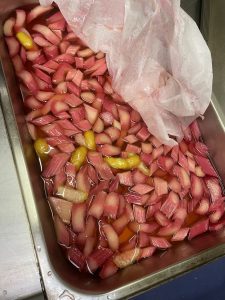
Poached rhubarb with lemon zest
Ingredients
- 500g rhubarb
- 8 tbsp light brown sugar
- 1 lemon
Method
- Cut the rhubarb into even 3cm pieces
- Peel the yellow zest from the lemon and set aside. Juice the remaining lemon.
- Place the zest, juice and sugar into a large wide-based saucepan. Add the rhubarb. Cover and bring to a gentle simmer.
- Cook gently for 5-10 minutes, until the rhubarb is starting to soften but still holds its shape. Remove from the heat and leave it to cool with the lid on.
- Serve and enjoy!
Don’t discard the cooking liquid as this can be used to make cordial or jelly! For cordial, serve the liquid and then boil down until reduced by 1/3. Store in a sterilised bottle and enjoy within two weeks. For jelly, follow the same steps, but add gelatin or agar agar to the reduced liquid while warm. Stir to dissolve, then pour into jelly moulds and leave in the fridge to set.
- different ways of chopping rhubarb
- rhubarb jellies
- rhubarb jelly
Rhubarb, Apple and Oat Crumble
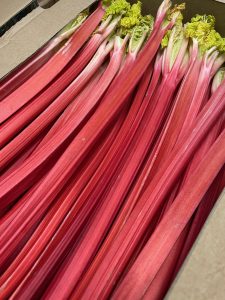
Forced Yorkshire rhubarb
This is a classic for a reason! We love adding Scottish oats to our crumble for some toasty flavour.
Ingredients
- 2 apples (about 450-500g)
- 400g rhubarb
- 100g sugar
- Cinnamon
- Mixed spice
- 125g plain flour
- 125g oats
- 75g sugar
- 125g cold unsalted butter, cubed
- pinch of salt
Method
- Dice the butter (or non-dairy alternative) and use your fingers to rub it into the flour, sugar and oats until it’s all crumbly. Add a touch of salt.
- Peel, quarter, deseed and roughly chop the apples. Chop the rhubarb into similar-sized pieces.
- Toss the fruit with the brown sugar and some spices to taste.
- Pour the fruit into trays and top with the crumble topping.
- Bake for around 40 minutes at 190°C and serve with cream, ice cream or yoghurt.



